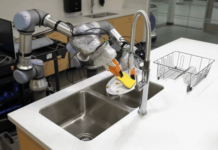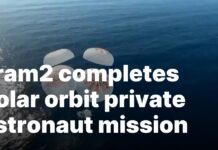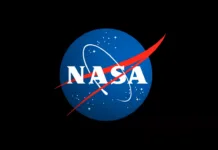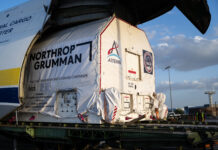Exploring Groundbreaking Innovations in Aerospace and Space Exploration
The future of aerospace and space exploration is being shaped by a myriad of innovative projects, each promising to revolutionize our understanding and capabilities in these fields. Recently, several projects under NASA’s Innovative Advanced Concepts (NIAC) program have been announced, showcasing groundbreaking ideas that could pave the way for the next generation of space exploration and aviation technology. Let’s explore these projects in detail and understand what makes them significant.
Hydrogen Hybrid Power for Aviation Sustainable Systems (Hy2PASS)
Phillip Ansell from the University of Illinois is spearheading a project called Hy2PASS, which aims to develop hydrogen hybrid power systems for sustainable aviation. The focus is on creating systems that utilize hydrogen as a fuel source to reduce carbon emissions and improve energy efficiency in the aviation industry. This project is important because it addresses environmental concerns associated with air travel, which is a significant contributor to global greenhouse gas emissions. By innovating in cleaner energy sources, Hy2PASS could significantly reduce the carbon footprint of aviation.
Construction Assembly Destination
Ryan Benson of ThinkOrbital Inc. is leading a project known as the Construction Assembly Destination. This initiative focuses on creating advanced construction techniques and technologies for assembling large structures in space. The ability to build such structures is crucial for long-duration space missions and establishing a sustained human presence on other planets. This project could potentially revolutionize how infrastructure is developed in the harsh environment of space, enabling future missions to be more self-sustaining and less reliant on Earth-based resources.
Lunar Glass Structure (LUNGS): Enabling Construction of Monolithic Habitats in Low-Gravity Environment
Martin Bermudez’s project, Lunar Glass Structure (LUNGS), is set to transform how habitats are constructed on the Moon. This project explores the use of lunar regolith, or moon dust, to create glass structures that can serve as habitats for astronauts. The idea is to use local materials to build durable and protective environments, reducing the need to transport building materials from Earth. This approach not only saves costs but also supports the sustainability of lunar missions by making use of available resources.
Dynamically Stable Large Space Structures via Architected Metamaterials
Christine Gregg from NASA Ames Research Center is working on dynamically stable space structures using architected metamaterials. Metamaterials are specially engineered materials designed to have properties not found in naturally occurring materials. This project aims to develop large space structures that can maintain stability in the dynamic environment of space. Such structures could be pivotal in constructing large telescopes or habitats in space, offering new possibilities for scientific research and exploration.
The Ribbon: Structure Free Sail for Solar Polar Observation
Gyulaz Greschik of Tentguild Engineering Co is developing The Ribbon, a structure-free sail designed for solar polar observation. This innovative sail could enable spacecraft to observe the sun’s poles, providing valuable data on solar activity and its effects on the solar system. The Ribbon’s design allows it to operate without the need for rigid structures, making it lightweight and efficient for long-duration space missions.
Exploring Venus with Electrolysis (EVE)
Michael Hecht from the Massachusetts Institute of Technology is exploring the potential of using electrolysis to study Venus. The EVE project focuses on utilizing the planet’s thick atmosphere to produce oxygen and hydrogen, which could be used as fuel for exploration missions. By harnessing local resources, this project aims to make Venus exploration more feasible and less dependent on Earth-supplied materials.
MitoMars: Targeted Mitochondria Replacement Therapy to Boost Deep Space Endurance
Robert Hinshaw from NASA Ames Research Center is working on MitoMars, a project that investigates the use of targeted mitochondria replacement therapy to enhance human endurance in deep space missions. Mitochondria are the powerhouses of cells, and improving their function could help astronauts withstand the harsh conditions of space travel, paving the way for longer and more demanding missions.
TOBIAS: Tethered Observatory for Balloon-based Imaging and Atmospheric Sampling
Ben Hockman from NASA Jet Propulsion Laboratory is leading the TOBIAS project, which involves the development of a tethered observatory for balloon-based imaging and atmospheric sampling. This innovative approach could provide new insights into planetary atmospheres and weather patterns, contributing to our understanding of climate processes both on Earth and other planets.
Inflatable Starshade for Earthlike Exoplanets
John Mather at NASA Goddard Space Flight Center is developing an inflatable starshade designed to assist in the observation of Earthlike exoplanets. This starshade can block out starlight, allowing telescopes to capture clearer images of distant planets. Such technology could play a critical role in the search for habitable planets beyond our solar system.
PULSAR: Planetary pULSe-tAkeR
Marco Quadrelli from NASA Jet Propulsion Laboratory is working on PULSAR, a system designed to enhance planetary exploration. This project aims to develop technology that can take precise measurements of planetary surfaces and atmospheres, providing valuable data for future missions.
SUPREME-QG: Space-borne Ultra-Precise Measurement of the Equivalence Principle Signature of Quantum Gravity
Selim Shahriar from Northwestern University is leading the SUPREME-QG project, which aims to make ultra-precise measurements of the equivalence principle, a key aspect of quantum gravity. This research could provide new insights into fundamental physics and enhance our understanding of the universe at the smallest scales.
Thermo-Photo-Catalysis of Water for Crewed Mars Transit Spacecraft Oxygen Supply
Saurabh Vilekar from Precision Combustion is exploring the use of thermo-photo-catalysis for generating oxygen from water aboard spacecraft bound for Mars. This technology could ensure a reliable oxygen supply for astronauts on long-duration missions, reducing dependency on Earth-supplied resources and enhancing mission sustainability.
Beholding Black Hole Power with the Accretion Explorer Interferometer
Kimberly Weaver at NASA Goddard Space Flight Center is working on the Accretion Explorer Interferometer, which aims to study black holes and their powerful accretion disks. Understanding these cosmic phenomena can reveal new insights into the nature of black holes and the dynamics of their surrounding environments.
Fusion-Enabled Comprehensive Exploration of the Heliosphere
Ryan Weed from Helicity Space LLC is investigating the potential of fusion technology for comprehensive exploration of the heliosphere, the vast region influenced by the solar wind. Fusion technology could provide a powerful and sustainable energy source for deep-space missions, enabling more extensive exploration of our solar system’s outer reaches.
LEAP – Legged Exploration Across the Plume
Justin Yim from the University of Illinois is leading the LEAP project, which focuses on developing robotic systems with legged mobility for exploring planetary surfaces, particularly those with plumes or geysers. Such technology could enhance our ability to study these dynamic environments and gather data from otherwise inaccessible areas.
These projects represent just a fraction of the innovative work being conducted to advance aerospace and space exploration. The potential applications of these technologies are vast and varied, promising to push the boundaries of what is possible and bring us closer to realizing our ambitions in space. As these projects move forward, they will undoubtedly contribute to a deeper understanding of our universe and the development of technologies that can benefit humanity both on Earth and beyond.
For more detailed information, you can explore the original announcements and project descriptions on the NASA website.
For more Information, Refer to this article.


































